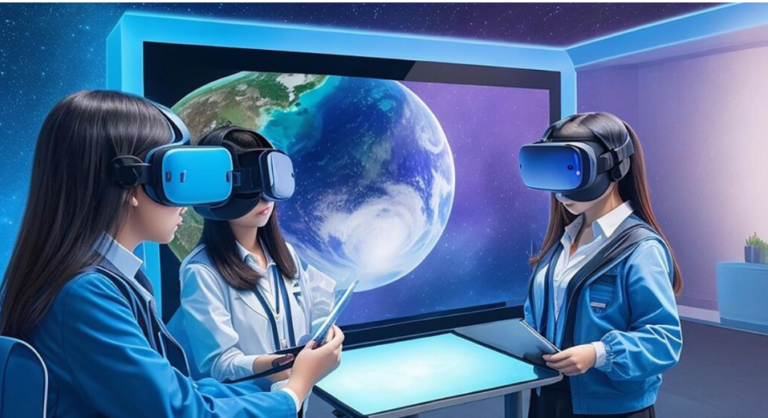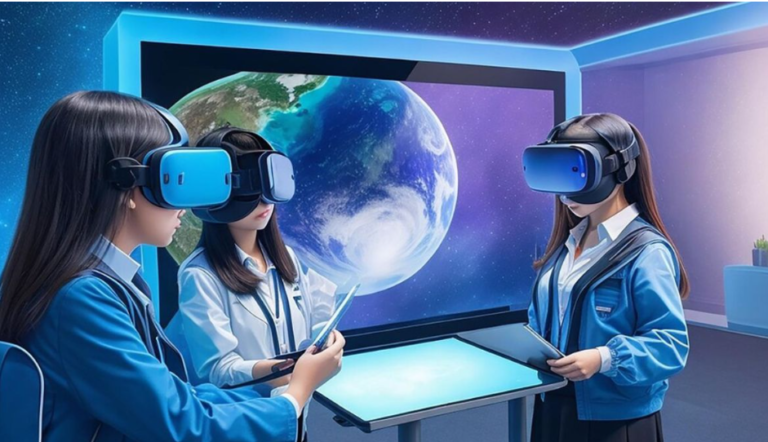The Importance of Balancing Multimedia and Administration
-
Operational Efficiency:
Proper balance ensures that neither administrative tasks nor multimedia projects suffer from neglect, leading to better overall productivity.
-
Resource Management:
Allocating resources effectively between these two areas prevents bottlenecks and allows for optimal use of skills and tools.
-
Enhanced Creativity:
Freeing up time from administrative burdens allows creative teams to focus on producing high-quality multimedia content.
Streamlined Efficiency by Balancing Multimedia and Administration
-
Implementing Collaborative Tools:
Use collaborative platforms to improve communication and workflow between multimedia and administrative teams. These tools facilitate project management, task allocation, and real-time communication, ensuring everyone is on the same page¹.
-
Automating Routine Tasks:
Automation reduces the burden of repetitive administrative tasks. By automating processes like data entry, scheduling, and email management, your team can focus on more strategic and creative activities.
-
Utilizing Cloud-Based Storage:
Centralized cloud storage ensures all team members have access to necessary resources, regardless of their location. Store multimedia files and administrative documents securely in the cloud.
-
Optimizing PC Setup for Multimedia Tasks:
Ensure that multimedia professionals have the hardware and software they need to work efficiently. High-performance PCs with sufficient RAM, storage, and graphics capabilities are essential.
-
Leveraging Data Analytics:
Analyze data related to both multimedia production and administrative processes. Insights from analytics can guide decision-making and resource allocation.
Best Practices for Balancing Multimedia and Administration
-
Prioritize Task Management:
Clearly define roles, responsibilities, and deadlines for both multimedia and administrative tasks. Regularly review progress and adjust as needed.
-
Foster a Collaborative Culture:
Encourage cross-functional collaboration. When administrative and creative teams work together seamlessly, efficiency improves.
-
Invest in Training and Development:
Provide training to enhance skills in both areas. Multimedia professionals can benefit from administrative training, and vice versa.
-
Monitor and Adjust Processes:
Continuously evaluate your processes. Be open to refining workflows based on feedback and changing business needs.

Challenges in Balancing Multimedia and Administration
Balancing multimedia and administration can be quite challenging due to the unique demands of both areas. Here are some common challenges:
-
Time Management:
Multimedia projects often have tight deadlines, while administrative tasks require consistent attention. Finding the right balance between urgent creative work and routine administrative duties can be tricky.
-
Resource Allocation:
Allocating resources (such as budget, personnel, and tools) between multimedia and administration can be complex. Prioritizing one area over the other may lead to inefficiencies.
-
Skill Diversification:
Multimedia professionals need creative skills (e.g., graphic design, video editing), while administrators require organizational and analytical skills. Balancing these diverse skill sets within a team can be a challenge.
-
Communication Gap:
Miscommunication between creative and administrative teams can hinder productivity. Clear communication channels and understanding each other’s needs are essential.
-
Technology Integration:
Integrating multimedia tools (e.g., Adobe Creative Suite) with administrative software (e.g., project management tools) can be daunting. Ensuring seamless data flow and compatibility is crucial.
-
Prioritization:
Deciding which tasks take precedence—whether it’s meeting a client’s multimedia request or handling an urgent administrative issue—requires careful judgment.
-
Creative Burnout:
Multimedia professionals often work intensively on creative projects. Balancing this intensity with administrative tasks can lead to burnout if not managed well.
Best Methods for Balancing Multimedia and Administration

Balancing multimedia and administration is essential for maintaining efficiency and productivity in any organization. Here are some best practices to achieve this balance effectively:
-
Clear Role Definitions:
Clearly define the roles and responsibilities of both multimedia and administrative teams. Ensure that team members understand their tasks and priorities. Regularly review and adjust these definitions as needed.
-
Collaborative Tools and Platforms:
Leverage collaborative tools and platforms to enhance communication and workflow. Project management tools, shared calendars, and instant messaging apps can facilitate seamless collaboration between teams.
-
Resource Allocation:
Allocate resources (such as budget, time, and personnel) appropriately. Consider the needs of both areas when distributing resources. Avoid overburdening one team while neglecting the other.
-
Regular Communication:
Encourage open communication between multimedia and administrative teams. Regular check-ins, status updates, and cross-functional meetings help bridge any gaps and ensure alignment.
-
Automation for Administrative Tasks:
Identify routine administrative tasks that can be automated. Use tools like task schedulers, email filters, and document management systems to streamline administrative processes.
-
Centralized Data Storage:
Maintain a centralized repository for multimedia files and administrative documents. Cloud-based storage solutions allow easy access for all team members, regardless of their location.
-
Training and Skill Development:
Invest in training programs that enhance skills in both areas. For example, administrative staff can benefit from multimedia software training, and vice versa.
-
Prioritization:
Prioritize tasks based on urgency and impact. Sometimes administrative tasks may need immediate attention (e.g., payroll processing), while multimedia projects require flexibility (e.g., creative brainstorming).
-
Feedback and Continuous Improvement:
Regularly seek feedback from both teams. Use insights to improve processes, address bottlenecks, and adapt to changing business needs.
-
Creative Environment:
Foster a positive and creative work environment. Encourage cross-functional collaboration, celebrate achievements, and recognize the contributions of both teams.
Conclusion
Balancing multimedia and administration is an ongoing effort. By integrating technology effectively and following best practices, your business can achieve streamlined efficiency and thrive in today’s dynamic landscape.










+ There are no comments
Add yours